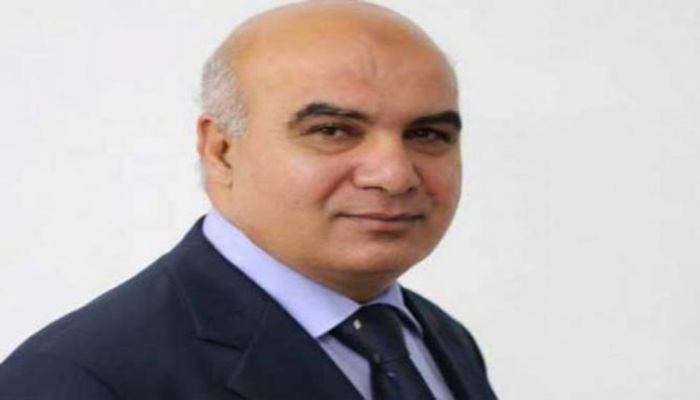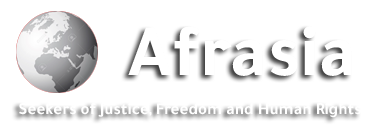
Afrasianet - Dr. Hani Al-Aqqad - Israeli prisons and detention centers are nothing less than graves, and the prisoners inside them are dead with suspended sentences.
Their lives are numbered in minutes, each day experiencing new pain, but their hope is renewed with the dawn of freedom one day. Few of them may leave these detention centers in peace, and even fewer remain aware of the world around them, to the point that some of them do not recognize their relatives after their release.
Even fewer come out without illnesses or permanent disabilities as a result of deprivation of food, denial of medical treatment, exposure to severe beatings, electric shocks, and the release of rabid and trained dogs to devour the bodies of prisoners and, in some cases, rape them. These are prisons of death and slow execution.
There is no less descriptive description for them. Prisons outside international oversight, outside this world that boasts of humanity, outside of human imagination, and outside the world of human rights that boasts of defending these rights, which knows almost nothing about the horrific crimes committed in these prisons and almost ignores that there are thousands of Palestinians detained in conditions This is extremely brutal, extremely inhuman, and a flagrant violation of their dignity.
They have no right to have their cases heard before fair courts. The courts have been suspended, and not a single prisoner has been brought before an Israeli judiciary since October 7.
Instead, they are imprisoned and tortured, even if they confess to a charge. They are subjected to repeated rounds of torture, depending on the wishes of the jailer or investigating officer.
The recent exchange deal, which freed nearly 2,000 Palestinian prisoners, exposed the tragedy of detention to the world and the horrific crimes committed against Palestinian prisoners: brutal torture, executions by suffocation and electrocution, deliberate shooting of the head and chest, broken ribs, shattered teeth and jaws, and torture involving pressure on sensitive areas and the insertion of iron objects into them.
This is in addition to starvation, being forced to hang themselves all day, and being deprived of sleep and bathing.
The liberated prisoners arrived in Khan Younis in a state of shock, showing signs of psychological shock and various signs of torture. Some had broken arms, some had amputated legs, some had shattered teeth, some lost an eye, and some had parts of their bodies burned. Many of them showed signs of brutal torture that degraded their human dignity.
This may have become a thing of the past once the liberation process took place, but it remains a deep pain in the human soul that I do not believe the years will erase. Every returnee has a story of pain, suffering, and loss.
These are the stories of those returning from death with their terrifying, horrifying, and hideous details. One of the prisoners said that the interrogation officer in the prison told him that all of his family members were killed in the Israeli bombing of their home in Gaza, and that all of his family members were killed, leaving him with no one.
However, when he was freed and released, he discovered that this interrogation officer or Shin Bet agent was using these lies to practice a form of psychological torture on the detainee, thus causing a severe breakdown in concentration. At that point, the detainee would confess to everything the interrogator wanted.
However, this did not happen in most cases because loss increases the detainee's determination to struggle, persevere, and be patient. He could not believe what he saw with his own eyes when he saw his wife and children alive. He embraced them, crying with grief and pain, as if he had brought them back from death.
However, the truth is that he was the one who returned from death and stood up again to tell the story of those who returned from death, so that it would remain in the history books as a witness to the endless crimes of the Zionist occupation. Another detainee, like more than ten thousand detainees in Israeli prisons, isolated from the world and seemingly living in another world, was shocked twice.
Once when the prisoners’ bus started entering Gaza through the Kerem Shalom crossing. They were stunned when they saw the massive and horrific destruction of the buildings and roads in the Strip, as if they were entering a city that was destroyed in World War II.
The massive destruction he saw raised his fears that he might not find his family, consisting of three sons, a daughter and a wife, alive. He began to wonder: Are they now dead under piles of rubble? Or are they dead in graves?
No one knows where those graves are, or are they dead in graves in the family cemetery? All these questions did not leave even a thin thread of hope that they would remain alive, and his feelings told him the truth. As soon as he arrived at Nasser Hospital in Khan Younis, his eyes began to fly to see any of them, but unfortunately, to no avail.
He was received by only some of his cousins who did not say anything to him, but he understood from the tears in their eyes that his entire family had been erased from the civil registry: the mother, wife, and children, just like thousands of families in the Gaza Strip.
Another story about a father and his two sons says that they have indeed returned from the dead. When the list of prisoners to be released from prison as part of the exchange deal was published, their families could not believe they were still alive.
They found their remains near their home in Khan Yunis, buried them, and set up a mourning house for them, as befits martyrs. Their relatives waited for them in the waiting area of Nasser Hospital until the prisoners' buses arrived.
The astonishment on the faces of the three of them was not great. They thought that everyone knew that they were alive, but they read the faces of their relatives and realized that they had believed that they were among the martyrs, and no one knew or told them that they were in detention.
The hug lasted a few minutes, and the caravan set off to where the family was staying in the Mawasi area of Khan Yunis in the displacement camps. They found themselves back from the dead when they listened to the conversations of those welcoming them, who could not hide their astonishment at this event that had not crossed their minds.
They had not had a single doubt that they were alive because evidence of their death was found near the house that would be theirs. Here, they began to recount the story of their arrest by the occupation army and the torture they endured while they were handcuffed and loaded into Israeli armored vehicles before they reached the detention center.
The torture and its rounds in the detention center were something else. The story of the detainee who was arrested by the special forces after they executed her husband in their home in front of her and her children's eyes was another matter. She knew that her husband was martyred and her children remained, the eldest of whom was no more than nine years old.
He refused to leave his mother alone in the hands of the special forces and wanted to give her his prayer dress, so the special forces arrested him and his mother and released him hours later.
The mother was arrested without knowing anything about her children, how they sleep, what they eat, how they live, and whether they would receive her upon arrival or not. Many thoughts flashed through her mind, but the majority of these thoughts were limited to wondering whether she was living a dream and would wake up in the cell and realize that her release had not been granted and that she was nothing more than a dream.
Another matter is that even before she arrived at the Kerem Shalom crossing and entered the Gaza Strip, she feared that her release was a trick and a game by the prison administration and the investigators, as a form of psychological pressure to extract a confession from her. Tales of death and life, tales of pain and suffering, unforgettable tales that remain alive in the memory of the liberated prisoner.
If he has any children left, he will tell them to them, and if he doesn't, he will tell them to others, because they reveal how criminal and ugly the occupier is.
The stories of arrest and post-arrest are all similar to the stories of those returning from death, and they may not be about them themselves, because they carry messages from other lives from other detainees who were not liberated, leaving behind them in the detention centers, pain and hopes, a longing for the freedom that detainees dream of without ever reaching it.
Many detainees die in detention, and the occupation refuses to hand over the bodies of some of them to their families after death. The stories of those returning from death will remain a history recorded in the record of crimes of the Zionist occupation, and all these crimes remain war crimes so that those who committed them do not escape punishment, because they are not only war crimes, but crimes against humanity.
This email address is being protected from spambots. You need JavaScript enabled to view it.

